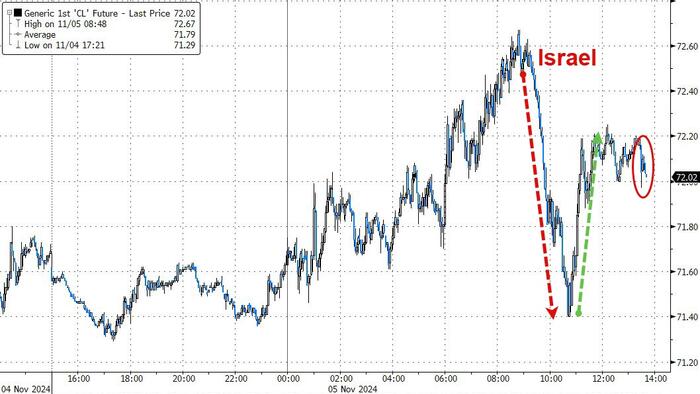Oil prices have demonstrated a sustained increase, closing higher for the fifth consecutive day, largely driven by geopolitical events in the Middle East, the upcoming U.S. elections, and concerns about economic instability in China. Traders are exhibiting a heightened sensitivity to these global developments. Rebecca Babin, a senior energy trader at CIBC Private Wealth, noted that the market’s current tension is tangible, with numerous factors stirring volatility. She highlighted the new strategies traders are adopting, characterized by a “shoot first, ask questions later” mentality, in response to rapid market changes. This cautious approach is particularly pronounced amidst the threats posed by a tropical storm to the oil production in the Gulf of Mexico, further complicating oil supply dynamics.
Recent data indicate continued fluctuation in U.S. crude inventories, which showed a larger-than-anticipated build in crude stocks, while gasoline and distillate fuel inventories experienced significant draws. Reports indicated that U.S. crude inventories increased by 3.13 million barrels. The Cushing hub, a critical oil trading point, saw an increase in stocks of 1.72 million barrels—the most substantial rise since May. Alongside this, gasoline inventories decreased by 928,000 barrels, while distillates recorded a draw of 852,000. Despite this mixed inventory data, West Texas Intermediate (WTI) crude prices managed to hold above the $72 per barrel mark, albeit with a slight dip noted in response to the API-reported crude draw.
As the oil market navigates through a landscape marked by uncertainty, prices continue to show an upward trend. Market analysts, like Alex Hodes from StoneX, are cautious but optimistic. There is an expectation of limited risk-taking prior to a series of significant announcements that could impact the market. Key upcoming events include decisions from the Federal Reserve regarding monetary policy, a Chinese congressional meeting that could lead to new economic stimulus measures, and the progression of the U.S. election cycle. These factors are critical in shaping trader sentiment and oil price forecasts moving forward.
One notable factor influencing traders is the current disparity between retail pump prices and crude oil prices, which remain relatively low in comparison. With the U.S. election now concluded, questions arise regarding how long this trend can last before prices inevitably rise. The potential for upward movement in oil prices stemming from fluctuating global dynamics is an area of keen interest for market watchers, particularly as they analyze the implications of shifting political landscapes and economic policies.
Moreover, analysts have pointed to the interplay between international events, such as ongoing tensions in the Middle East and domestic political developments, as key drivers of oil price movements. This multifaceted situation creates a challenging environment for traders who must navigate varying degrees of uncertainty and risk. The interest in short-term volatility and immediate positioning reflects broader market sentiments that are currently influenced by external geopolitical pressures and domestic economic indicators.
In conclusion, the oil market is at a critical juncture, where a variety of geopolitical, economic, and domestic factors interplay to influence pricing dynamics. Traders are responding with caution amid rising tensions and uncertainty, adopting strategies that prioritize immediate risk management. As upcoming events unfold, including policy meetings and economic stimuli discussions, oil prices are likely to remain volatile. Ultimately, how traders react to these circumstances and global developments will dictate oil prices as the market continues to evolve.

